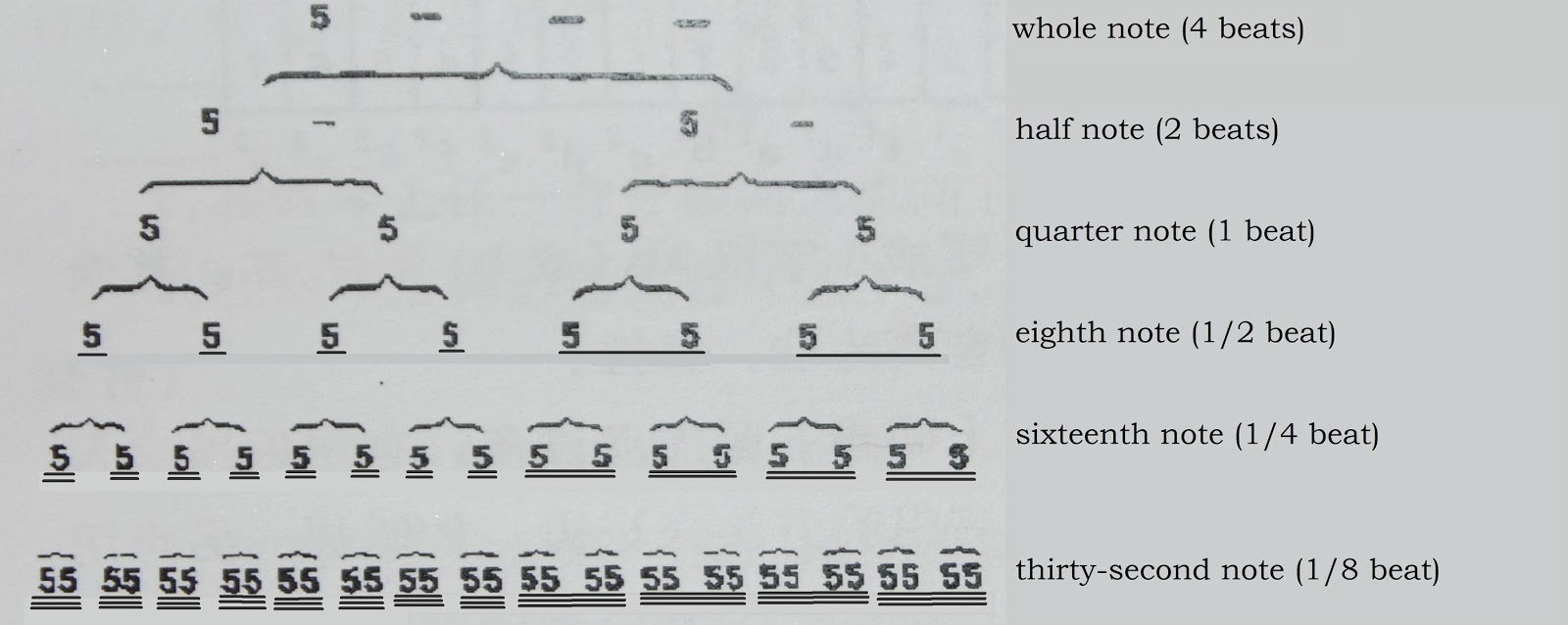The "Actual" Traditional Notation
First of all, this is NOT the original notation system that my ancestors used. Traditional Chinese music, as a lot of you might know, was composed on a pentonic scale, what a lot of people do not know is how they used to notate the music, they used Chinese words "宮(gong)", "商(shang)", "角(jyue)", "徵(ji)", "羽(yu)", to represent "Do", "Re", "Mi", "So", "La" respectively, and they have other Chinese words to indicate the rhythms, and performing technique, as you can tell, that's some heavy "reading", and it's difficult to understand (see Fig.1 below for an example of antient Chinese written music); therefore, the musicians in China started to adapt the Numbered Musical Notation in 1904.
Fig.1 Antient Chinese written music
The Numbered Musical Notation
The Numbered Musical Notation was invented by a French composer named Jean-Jacques Rousseau in the 18th century. Despite the fact it was invented in Europe, the world of Western music never really adapt this notation system, when the modern Chinese scholars are trying to organize some ancient written music, they adapted this simple system that is easy for just about anyone to sight-read. The Numbered Musical Notation is now more commonly known as JianPu (簡譜), which means "simplified notation" in Chinese.
The Basics
- The Notes
- Rest = 0
- Do = 1
- Re = 2
- Mi = 3
- Fa = 4
- So = 5
- La = 6
- Ti = 7
- Notating
Write the base key on the top left corner of the score; for example, 1 = E means the music is in the key of E Major - High and Low Pitches
- Base key = just numbers
- Octave above base key = "." on top of number
- Octave below base key = "." below number
- 2 Octave above base key = ":" on top of number
- 2 Octave below base key = ":" below number... the more octave away from the base key, the more dots you add to the number
- Usually the base key refers to the C4 - B4 on the piano keyboard; however, it really depends on the range of the instrument, for instance, if you want to notate an instrument with higher pitches, you lower the base key by an octave when notating.
- Note values
- Rhythm trees
- For dotted note values the Numbered Musical Notation is the same as Western Music Notation, which means, 5. = 5 + 5; however, to notate dotted half and dotted whole, one simply add extra dashes behind the number, for example, dotted half = 5 - -



No comments:
Post a Comment